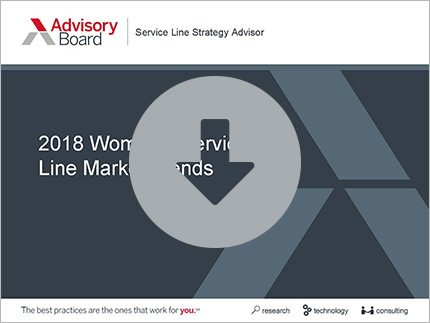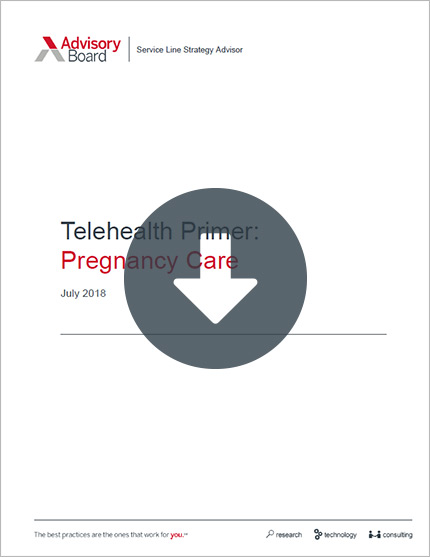Auto logout in seconds.
Continue LogoutNew mothers increasingly are asking their providers questions about eating their placentas, a practice that Jen Gunter, an OB-GYN, describes in the New York Times as a "novel therapy based on anecdotes, with no standardized—not to mention safe—method or preparation."
Download the telehealth primer on pregnancy care
'As someone who specializes in infectious diseases and sexual health ... I was dumbfounded'
Gunter explains that she's seen growing interest among patients in recent years in placentophagy. She reflects, "As someone who specializes in infectious diseases and sexual health, I am used to hearing things about the body that most people can't imagine." However, when it comes to inquiries about eating placenta, Gunter says, "I was dumbfounded."
The placenta, she explains, filters out toxins during pregnancy and transports oxygen and nutrients from the mother to the developing fetus. As such, they "are often colonized with bacteria," Gunter writes. She adds, "[I]t's best not to eat something that is potentially teeming with bacteria, many of which may be pathogenic."
So why would a woman eat her placenta?
Proponents of the trend say it increases breast milk production and energy while also improving overall mood and helping women recover quickly from birth. However, no scientific studies have corroborated these claims, Gunter writes.
Another common justification for placentophagy is that other mammals do it, Gunter writes.
However, she disputes this justification, citing the differences between the reproductive biology of humans and that of other animals. "Other mammals often have litters. Or differently shaped uteri with less invasive placentas," she writes.
Gunter notes that animals also have "entirely different behaviors" from humans. As an example, Gunter notes her cat eats grass to vomit, which Gunter suspects is in response to having "an upset stomach." She asks, "Imagine if your gastroenterologist suggested eating grass for an upset stomach because cats do it?"
Gunter also debunks the justification that placentophagy is an "old ancient practice." According to Gunter, "[I]t is unclear when exactly the modern practice of human placentophagy started," noting that the practice was first mentioned in medical literature in 1973.
Gunter suggests "those with financial interest" may be promoting placentophagy. She explains that some women eat placenta in capsule form and that "[p]lacental encapsulation can cost from $200 to $400."
Why you shouldn't eat placenta
Gunter writes that women shouldn't eat their placenta because there isn't enough research on its effects—and so far, research indicates it carries risks. She writes, "[W]e in medicine are now faced with that Trojan horse of recommendation—anecdotes with the promise of amazing results."
The limited research has found that encapsulated placenta may have a small amount of iron and enough estradiol and progesterone to have a clinical effect. But Gunter writes for most women it's not advised to increase doses of reproductive hormones shortly after giving birth because " it can have a negative impact on milk supply, and could theoretically lead to an increased risk of dangerous blood clots."
In addition, CDC has reported at least one case of neonatal sepsis that stemmed from the handling or ingestion of encapsulated placenta that contained bacteria group B streptococcus, Gunter writes.
While the postpartum period "can be very hard for many, if not most, women," Gunter writes, turning to eating placentas without more research just isn't safe. "[A] novel therapy based on anecdotes, with no standardized—not to mention safe—method or preparation, is no answer," she writes. "We know so little about eating placenta that we don't even know what we don't know" (Gunter, New York Times, 9/6).
Your telehealth primer on pregnancy care
Read this primer to learn more about how pregnancy care providers are implementing live virtual visits, remote patient monitoring, and asynchronous store-and-forward communication in their practice.
Don't miss out on the latest Advisory Board insights
Create your free account to access 1 resource, including the latest research and webinars.
Want access without creating an account?
You have 1 free members-only resource remaining this month.
1 free members-only resources remaining
1 free members-only resources remaining
You've reached your limit of free insights
Become a member to access all of Advisory Board's resources, events, and experts
Never miss out on the latest innovative health care content tailored to you.
Benefits include:
You've reached your limit of free insights
Become a member to access all of Advisory Board's resources, events, and experts
Never miss out on the latest innovative health care content tailored to you.
Benefits include:
This content is available through your Curated Research partnership with Advisory Board. Click on ‘view this resource’ to read the full piece
Email ask@advisory.com to learn more
Click on ‘Become a Member’ to learn about the benefits of a Full-Access partnership with Advisory Board
Never miss out on the latest innovative health care content tailored to you.
Benefits Include:
This is for members only. Learn more.
Click on ‘Become a Member’ to learn about the benefits of a Full-Access partnership with Advisory Board
Never miss out on the latest innovative health care content tailored to you.


